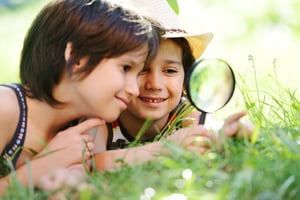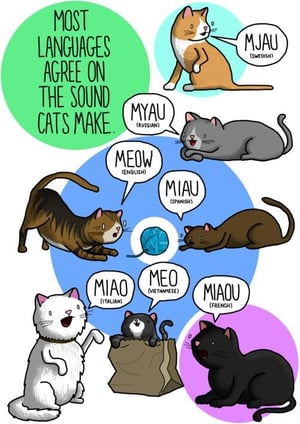Time to read: 7 minutes
 With a high pitched squeal of delight, the boy tumbled down the grassy slope coming to a stop half way down. He lay on his back and closed his eyes a moment to catch his breath but also to savour the warmth of the summer sun on his face. He swatted away a buzzing fly.
With a high pitched squeal of delight, the boy tumbled down the grassy slope coming to a stop half way down. He lay on his back and closed his eyes a moment to catch his breath but also to savour the warmth of the summer sun on his face. He swatted away a buzzing fly.
The boy listened to the hiss of the tall yellowed grass that swayed gently in the breeze. All around him cicadas chirruped. A kookaburra started chortling in a tree somewhere, while a pair of cockatoos screeched in the sky overhead.
A few metres on, the creek gurgled on its merry way. The splish-splash of water promised cool relief. And just on the other side of it, where the family set up camp, he could hear the crack of the block splitter his father employed to cleave hand-sized pieces of timber in preparation for their campfire tonight.
How many of you could visualise the scene and hear the sounds described?
Onomatopoeia.
You might remember the term back in your primary school days. It comes from the Greek onoma meaning "name" and poiein meaning "to make” which when combined is the written form of a sound - squeal, buzz, hiss, chirrup, chortle, screech, gurgle, splash, crack.
These are all sounds we’re familiar with. They are everywhere and their use adds light and shade to prose. But their effectiveness is dependent on having experienced those sounds.
For children who have poor hearing, or who are deaf from birth, onomatopoeia is difficult to understand because they have no frame of reference for the sound.
In 2019, researchers in Japan wondered whether there was another way to give these children a better understanding of what was like to experience the sound. They came up with the idea of taking a multi-sensory approach:
“To address this problem, we developed a device that converts audio information into vibrations, and attempted to broaden the experience of sound by using multisensory methods to stimulate the senses of sight, hearing, and touch. In the rhythm discrimination test using the device, the hearing-impaired group showed better performance with vibration added to the audio information than without vibration. In addition, we designed a science lesson to help hearing-impaired individuals learn cicada songs. This lesson used multiple media including text, images, sounds, sound waveforms, onomatopoeia, and vibrations. The evaluation results showed a significant difference between the students who were able to distinguish the vibrations and those who could not. The former reported that they found the lesson enjoyable and that it was a useful way to learn science.”
Many of these sounds are higher in frequency and if you have untreated hearing loss as an adult, you might find that you no longer hear the sounds of summer described in the scene at the top of this article.
If you are unsure whether or not you have hearing loss, go out into the outdoors with a younger family member and ask them describe all the sounds they hear - the birds, the insects, the bark of a dog, a meow of a cat . Do you hear what they hear?

For hearing aid wearers, it is important to stop and take the time to seek out those sounds in order to practice hearing. If you’ve had untreated hearing loss for a while, your brain needs a bit of time to get used to hearing a sound and understanding what it means.
Further reading:
- How To Get Used To Wearing Hearing Aids
- Why you should wear your hearing aids even when it is quiet
- Better Hearing By The Letter
Did you know that different languages hear onomatopoeia slightly differently?
For example, in English cats say ‘meow’.
In Persian it is ‘miyu’, but ‘miaou’ in French, or ‘miau’ in German and Spanish. But in Greek it is ‘niaou’ and in Japan, cats say ‘nyā’.
Despite all the variations in the different languages, the sound cats make is quite universal when you say the word aloud.

